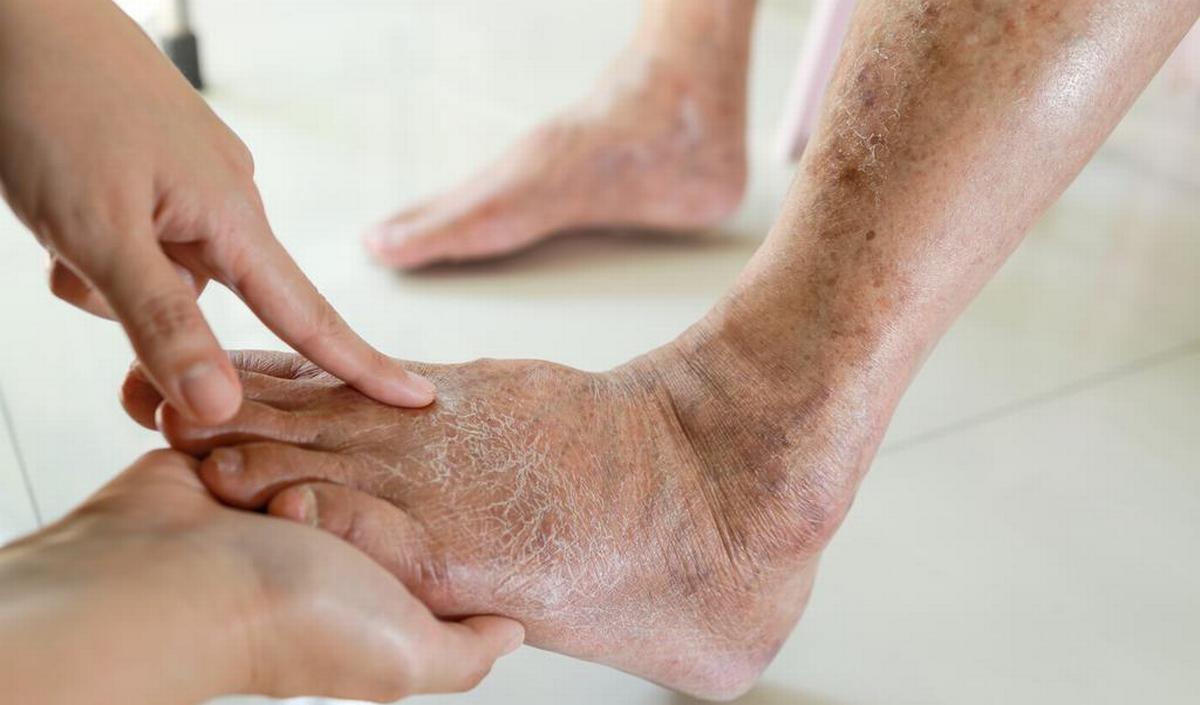In this article
Diabetic dermopathy: what are sugar spots?
dossier
In medical terms, sugar spots are called ‘diabetic dermopathy’. They are oval red spots of half to one centimeter that are mainly located on the shins. The spots are more common in people over 50 years of age and in people who have had diabetes for some time.
Also read: How do you recognize diabetes?
Cause
Diabetes can cause changes in small blood vessels and these changes can lead to skin problems such as diabetic dermopathy.
However, the exact cause of the spots is unknown. Researchers do have different theories. For example, there would be thermal damage around the areas, there would be slower wound healing due to reduced blood flow in the area and nerve degeneration.
There is also a possible link between diabetic dermopathy and other complications of diabetes. For example, research has shown that people with diabetic dermopathy are significantly more likely to suffer eye, nerve or kidney damage than people without this condition.
Also read: Diabetes: blood tests will soon no longer be necessary
Symptoms
© Getty Images
Diabetic dermopathy appears spontaneously on the shins, usually on both legs. The spots are initially light pink, brown or purple and feel a bit flaky. They may appear slightly dented.
Over time, the spots turn brown and round or oval. They are usually less than one centimeter in diameter, but can grow up to 2.5 cm. They can look like age spots, especially if they occur in clusters.
In rare cases, diabetic dermopathy can also appear in other places on the body, such as higher on the thighs or on the forearms or sides of the feet.
The condition itself is harmless and does not cause any additional symptoms or pain. Skin patches that burn, tingle or itch are therefore a sign of another skin condition.
Also read: Age spots or liver spots (Lentigo)
Therapy
There is no specific treatment for diabetic dermopathy. Because the spots themselves are harmless and asymptomatic, no treatment is necessary. The condition usually goes away on its own, but healing time may vary from person to person.
The most important measure you can take is to control your blood sugar levels. This will not only help control diabetic skin conditions, it will also help prevent other complications of diabetes.
If you find the sugar spots unsightly, you can cover them with makeup. If the skin patches are dry or flaky, moisturizer can help to relieve the symptoms and prevent the patches from spreading.
Research also shows that applying lotions with ingredients such as collagen or glycerin can make changes in skin tone less noticeable.
Also read: What does a collagen supplement do for our skin?
Sources:
Last updated: December 2023
Articles about health in your mailbox? Subscribe to our newsletter and receive a free e-book with healthy breakfast recipes.
Related articles
Related sections
2023-12-06 23:03:34
#Diabetic #dermopathy #sugar #spots #health.be


